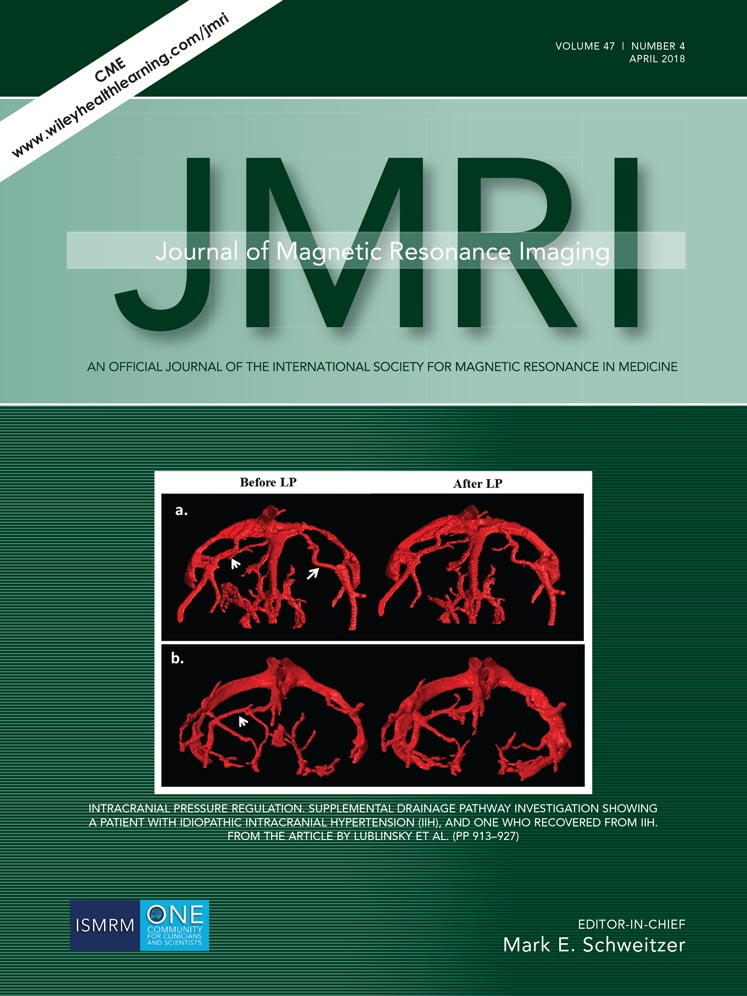Amide proton transfer-weighted imaging to differentiate malignant from benign pulmonary lesions: Comparison with diffusion-weighted imaging and FDG-PET/CT
Abstract
Purpose
To compare the capability of amide proton transfer-weighted (APTw) imaging, diffusion-weighted imaging (DWI), and FDG-PET/CT for the differentiation of malignant from benign pulmonary nodules.
Materials and Methods
In all, 82 consecutive patients with pulmonary nodules underwent APTw imaging and DWI with a 3T system, and FDG-PET/CT. All nodules were divided as either malignant (n = 49) or benign (n = 39) groups based on pathological and follow-up examinations. To evaluate the capability for differentiation of malignant from benign nodules, magnetization transfer ratio asymmetry (MTRasym)(3.5ppm) on APTw imaging, apparent diffusion coefficient (ADC), and maximum value of standard uptake value (SUVmax) were assessed. Receiver operating characteristic (ROC) analyses were performed to computationally determine each feasible threshold value. Next, McNemar's test was used for comparing diagnostic performance with each other as well as with a combination of the significant factors determined by multivariate logistic regression analysis.
Results
Although sensitivity of ADC was significantly higher than that of MTRasym(3.5 ppm) (P = 0.002) and SUVmax (P = 0.004), specificity of MTRasym(3.5 ppm) and SUVmax was significantly higher than that of ADC (P < 0.05). Sensitivity of combined MTRasym(3.5ppm) with SUVmax was significantly higher than that of MTRasym(3.5ppm) (P = 0.001) and SUVmax (P = 0.002) alone. Moreover, specificity and accuracy of combined MTRasym(3.5ppm) with SUVmax were significantly higher than that of ADC (specificity: P = 0.002, accuracy: P = 0.008).
Conclusion
APTw imaging appears to be as useful as DWI and FDG-PET/CT for differentiation of malignant from benign nodules.
Level of Evidence: 2
Technical Efficacy: Stage 2
J. Magn. Reson. Imaging 2018;47:1013–1021.




